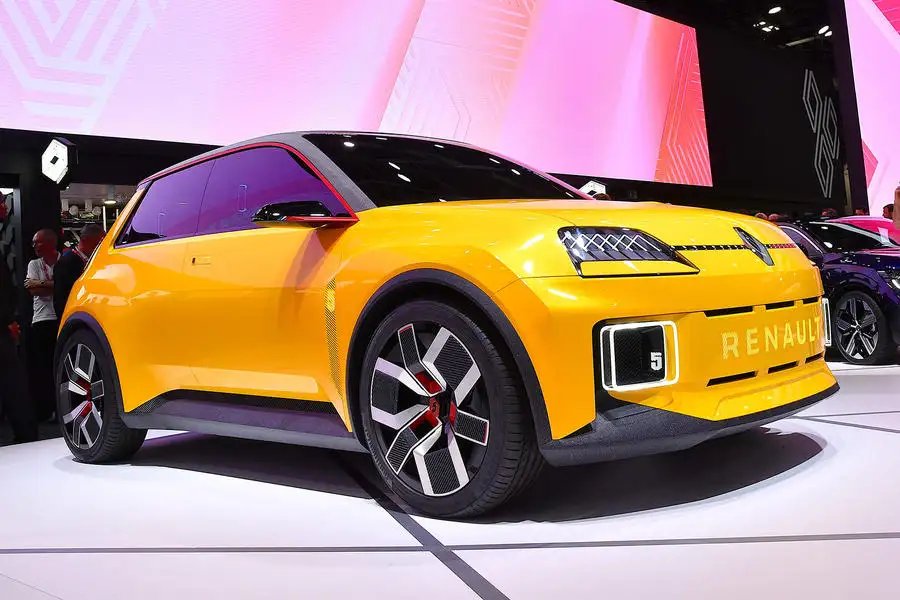Nissan to invest £515m in Renault's EV unit as Alliance deal sealed

Nissan will invest €600 million (£515m) into Renault’s Ampere EV company, as the two major car makers finalise a new, more equitable Alliance partnership.
This investment into the electric vehicle and software firm “complements and strengthens Nissan’s ongoing electric push in Europe”, said Nissan CEO Makoto Uchida, and will deliver “numerous synergies, including cost efficiencies, regulatory compliance and a broader range of EV products and powertrains”.
The deal, which is part of the final considerations in a protracted re-establishing of the two firms' relationship, gives Nissan a seat on the board of Ampere.
Signed today, the new Alliance agreement will now go through final checks by law makers before it is formally completed in the fourth quarter of 2023.
It comes after Nissan asked for a rebalancing of the pair’s shares in each company: Renault’s stake stood at 43% while Nissan owned only 15% of Renault.
That smouldering imbalance – which had grown since the pair’s initial Alliance agreement in 1999 – has now been defused by Renault agreeing to reduce its stake in Nissan to the same 15%, with the remainder placed in a trust.
Renault still benefits from the dividend of Nissan’s profits that the extra 28% generates, but now both companies have equal say in the future of the other, based on voting rights.
Now that the agreement has been ratified by the boards of both companies, Renault and Nissan can resume collaboration on automotive development in an atmosphere of shared trust.
The latest news has been welcomed by key members from each company, with Jean-Dominique Senard, chairman of the Alliance, calling the agreement a “step into the next chapter of the Alliance” that “lays the foundations for a new balanced, fair and effective governance”.
Uchida said the agreement “will create additional value through initiatives”, with Renault Group CEO Luca de Meo adding that it gives the firm “the strategic agility that we need more than ever in today’s rapidly evolving environment”.
Back in February, when the original statement of intent announcement was made, analysts conveyed their relief to investor clients. “A resized capital structure should help keep the Alliance viable, maintaining synergies and opening up strategic opportunities on both sides,” said Philippe Houchois, automotive equity analyst at Jefferies, in a note.
Banking firm Bernstein meanwhile raised its rating on Renault’s shares to "outperform", meaning it reckoned they could do better than those of its peers, based on the news.
“Untying the Gordian knot between Nissan and Renault was a key reason for our upgrade,” analyst Daniel Roeska wrote in February.
As reported, Renault can sell the 28% of Nissan stock to be held in trust, which could unlock an additional €3.8 billion (£3.3bn) of cash to throw at the electrification and software shift, based on Nissan’s current share value.
The partnership can now be “reloaded” with collaboration on “high-value” projects in Europe, Latin America and India, covering vehicles, markets (likely sales distribution and marketing) and technologies. These aim to deliver "win-win, large-scale and actionable benefits", the pair said.
Bernstein’s biggest question concerned Project Horse, the unit created by Renault in partnership with China’s Geely that will build hybrid and combustion powertrains. Nissan has expressed private concern that its intellectual property might be compromised by third parties.
The very fact that it took so long to craft this agreement illustrated how far apart Nissan and Renault have travelled. The strains of the Alliance (which in 2016 grew to include Mitsubishi after Nissan took a majority share) came to a head in 2019, after then CEO Carlos Ghosn was arrested in Japan for failing to declare portions of his salary.
The pressing need for renegotiation of the Alliance was accelerated in 2020, when Nissan and Renault slumped to huge losses due to the pandemic, with former Volkswagen Group executive Luca de Meo drafted in to overhaul Renault that year.
De Meo’s response to reform the company amid the electrification shift has been swift, including crafting plans to spin off the Ampere division, but repairing the Alliance was one issue that dragged on.
The simmering distrust on both sides has likely stalled the signing of common agreements in a crucial phase during the switch to electrification, in much the same way that the lengthy implementation of Brexit hampered UK automotive investment during the same once-in-a-generation changeover.
The two companies have agreed on certain projects. For example, Renault now leads the development and manufacturing of Nissan’s new electric Micra, which shares the Renault 5 platform. Renault will also rebadge the Captur and Clio for Mitsubishi to allow that brand continued access to a region that's becoming harder to build stand-alone cars for, given the regulatory burdens.
Harnessing shared economies of scale has become absolutely critical if the rising cost of batteries and the dangers of new, more nimble competitors are to be headed off at the pass. For example, Renault and Nissan didn’t outwardly need two different hybrid drivetrains powering its bigger vehicles, especially given that the technology will have a relatively short shelf life.
The two companies didn’t mention North America in future shared projects, and we wonder why. The US looks to be a golden zone for the combined development of a premium EV drivetrain that can be used by both Renault’s ambitious Alpine performance car division and Nissan’s upmarket Infiniti brand.
The fact that Alpine is considering Geely as well as Nissan as a platform partner for bigger cars suggests that, as the global centres of gravity shifts in terms of EV development and Renault looks to unlock more value in its divisions, Nissan might not be the most attractive of bedmates, even within the re-engineered Alliance.
Nouvelles connexes


